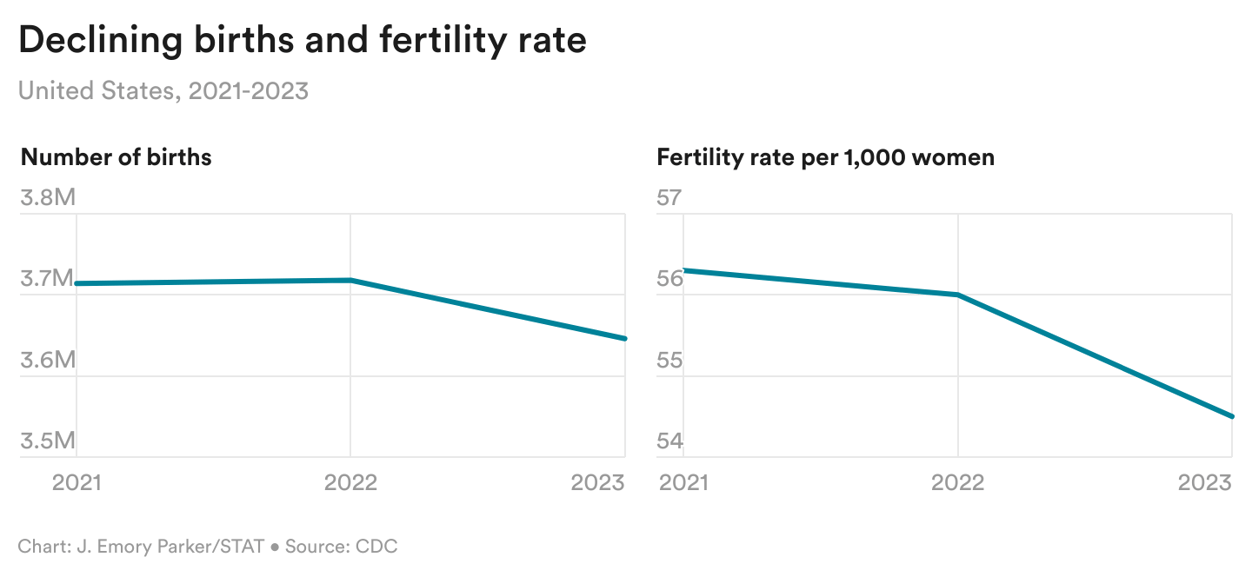reproductive health
Downward trend continues for U.S. birth rates

The number of births in the U.S. decreased 2% from 2022-2023, while the general fertility rate decreased 3%, according to new data from the CDC's National Vital Statistics System. It's nothing particularly new for birth rates, which had already been declining for more than a decade when they saw a major 4% drop at the onset of the pandemic in 2020.
The birth rate also continues to decline specifically for teens ages 15-19, from 13.6 to 13.1 births per 1,000 young women.
first opinion
How helpful can graphic mpox images really be?
Last week, the WHO declared the latest mpox outbreak a public health emergency of international concern. Media coverage has often been paired with images of the disease on patients arms, legs, and hands. But some images are less clinical: They are headshots, more like mugshots, of African people with mpox covering their faces.
There's one of an African patient somberly looking into a camera; another that's a doctor's hand pointing at vesicles on an African child's face; and a disturbing image of a child who has his hands raised, as if being held up by the police, revealing pustules on his face, hands, and chest. It's part of a greater historical pattern in how Western media frame outbreaks in places like Africa, writes author Jim Downs in a new First Opinion essay.
Of course, there are practical reasons to distribute images of an infectious disease. But at a certain point, can these stigmatizing images do more harm than good? Read more.
first opinion
Mask bans put disabled people in danger — even with medical exemptions
Kaitlin Costello has been masking in public ever since the Covid-19 pandemic began. As someone who received a kidney transplant, she'll be on immunosuppressants for the rest of her life, making her particularly vulnerable to infectious diseases.
But last week, the nation's first ban on masks was signed into law, in Nassau County, N.Y. "If I lived just 60 miles east of my New Jersey town, I would be under threat of a fine or jail time every time I left the house," Costello writes in a First Opinion essay. The ban is intended to stop people from covering their faces when committing crimes, and includes exemptions for those who mask for medical reasons. But it's up to the police, Costello notes, to assess a person's reason for masking.
Read more in Costello's essay on how mask bans disenfranchise people with disabilities.


No comments